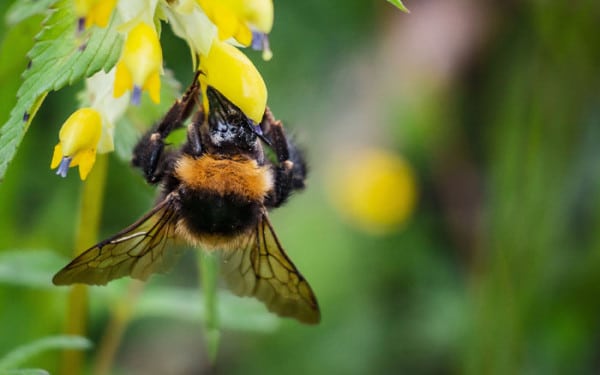Parasitic plants are plants that get their nutrients to survive from another existing plant – basically they piggy-back and steal from other plants. They sound fascinating, but these types of plants only make up 1% of all plant species.
What are parasitic plants?
Fully parasitic plants or holoparasitic plants don’t photosynthesise, so depend on their host for all of their nutrition. The parasitic plants don’t benefit the host plant, and can even cause detrimental damage to them.
As well as fully parasitic plants, there are hemi-parasites, which are partially parasitic. These types still photosynthesise, but they get their water and nutrients from the roots of the host. However, hemi-parasites don’t need a host to survive, but if they are in an area that’s low in nutrients, they will thrive and grow faster by having a host.

Look out for…
In the UK, there are a range of parasitic plants that you may spot in meadows, on road sides, or in marshland. These are a few that you may recognise…
Odontites vernus (red bartsia)
This partly-parasitic plant has pink-purple flowers through summer and into autumn. It lives as a parasite, using the roots of grasses to get moisture and nutrients. It’s a slightly messy looking plant that is commonly seen next to railways, roads, and waste ground. Pollinators are common visitors to red bartsia, with carder bees enjoying the flowers.

Pedicularis sylvatica (lousewort)
A fairly low growing plant, lousewort grows to around 15cm tall. There are delicate looking flowers that tend to be pink, but can be found in white too. They tend to be found in grassy areas, where they steal moisture and nutrients from. They prefer acidic soil, so are often found near other ericaceous plants like heather in heathland and bogs.

Rhinanthus minor (yellow rattle)
The lemon yellow flowers of yellow rattle flower through spring and summer. This annual grows very quickly, with roots searching out grass roots to steal resources. This can reduce the vigorous growth of the grass, which some see as a positive because it allows other plants to grow.
These plants have flowers that are visited by bumblebees. The flowers turn to distinctive seed pouches that rattle when they’re dry, hence their common name.

Euphrasia nemorosa (common eyebright)
This small plant has pale lavender flowers with a yellow blotch through late spring to autumn. It’s a hemi-parasite, getting nutrients and moisture from the roots of grass, and making up the rest with regular photosynthesis. Its common name is due to it being used in herbal remedies to treat eye ailments.

Cuscuta (dodders)
Dodders don’t contain any chlorophyll so get their food from a host plant. The stems of this plant are wispy and stringlike, and can be found in yellow, pink, orange or brown colours. There are also flowers which appear in clusters of tiny bell-shapes.


Leave A Comment